By Lierra Coburn
Innocent animals squirm in cages. They have no choice. They’re entirely vulnerable. Their life will be a life of torture, of being skinned alive, being beaten, and forced to stay in cages, all for the purpose of pleasing people who want to wear fur.
Innocent animals squirm in cages. They have no choice. They’re entirely vulnerable. Their life will be a life of torture, of being skinned alive, being beaten, and forced to stay in cages, all for the purpose of pleasing people who want to wear fur.
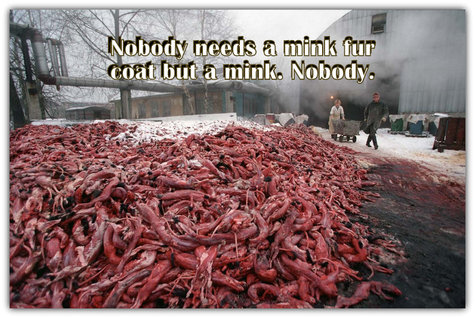
Many different types of animals are forced to go through various torturous methods of killing. According to PETA, “Fur farmers use the cheapest and cruelest killing methods available, including suffocation, electrocution, gas, and poison.” It's all about what is cost effective regardless of the suffering. Some animals are even alive to feel pain when they’re being skinned. The victims aren’t just getting tortured through the killing methods, but some begin to harm themselves from the anxiety of being kept on a fur farm.
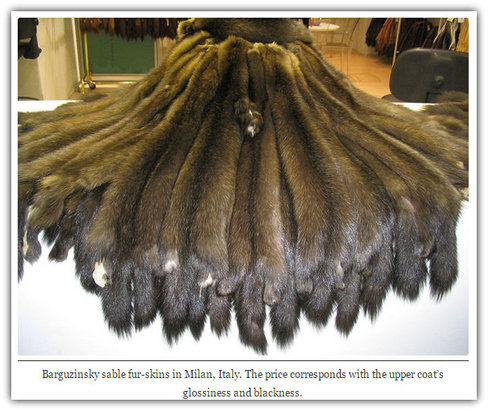
The animals being skinned for fur aren’t only wild animals, such as foxes, but domesticated animals as well. In the United States, most of the cases of domesticated animals are generally accidental due to dogs and cats getting trapped in the fur traps. In China however, many cats and dogs are intentionally skinned for their fur. Most people own pets and enjoy their pets, so wouldn’t it be ironic if they owned fur from the same type of animal as their pet? It happens and consumers just don't know it.
I don't think it's right to wear any fur, but wearing the fur of domesticated animals seems worse. Also, some fur is intentionally mislabeled. Sometimes, it may be labeled as “faux fur” when it’s actually real fur, sometimes even dog and cat fur.
To make a fur coat, it doesn’t take just the life of one creature, but, depending on the style of the garment and type of fur, it can take between 6 and 400 animals. With all the fur coats that are made each year, the amount of animals killed for fur is beyond heart breaking.
I don't think it's right to wear any fur, but wearing the fur of domesticated animals seems worse. Also, some fur is intentionally mislabeled. Sometimes, it may be labeled as “faux fur” when it’s actually real fur, sometimes even dog and cat fur.
To make a fur coat, it doesn’t take just the life of one creature, but, depending on the style of the garment and type of fur, it can take between 6 and 400 animals. With all the fur coats that are made each year, the amount of animals killed for fur is beyond heart breaking.
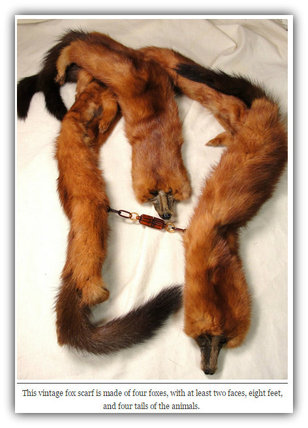
The fur industry commonly interferes with the species’ “natural cycle.” An example of this is the harp seal, which migrates between November and March. During this cycle, large amounts of the harp seals are killed by the fur industry, which disrupts this migration cycle, harming the harp seals. Also, the animals are used to living in their habitats, not in tiny, cramped cages with a hose supplying their water.
Despite the monumental suffering in the fur industry it continues because of money. As long as there's a demand for fur there will be companies ever ready to meet the supply. Purchasing and wearing fur supports the mindless abuse, suffering and death of hundreds of thousands of innocent animals each year. How is this okay? How are the lives of these animals so meaningless? All life matters. Please think about the suffering the next time you consider buying a beautiful fur garment. I mean really t h i n k about it. Can you seriously separate all the horror associated with obtaining fur and simply wrap yourself up in it while ignoring, denying and dismissing what the animals went through just so you can wear their fur? Not so stunning and luxurious anymore now, is it?
The International Fur Federation (below) has developed a global fashion campaign to communicate the modern face of fur and to break down stereotypes around what fur is and who wears it. After knowing what it takes to bring you fur, can you justify buying it?
September 11, 2014 "A two-year investigation reveals horrifying treatment of rabbits allegedly supplied to top fashion designers." READ article or click on image below to watch video.
Works Cited:
Fur Free Staff. "Fur Farms." Fur Free Alliance. Fur Free Alliance, 2014. Web. 25 Nov. 2014. <http://www.infurmation.com/index.php/issues/fur-farms>.
Humane Society Staff. "Fur : Humane Society International." HSI. Humane Society International, 2014. Web. 25 Nov. 2014. <http://www.hsi.org/issues/fur/>.
LCA Staff. "Fur Trade Facts." Last Chance for Animals. Last Chance for Animals, 2014. Web. 24 Nov. 2014. <http://www.lcanimal.org/index.php/campaigns/fur/fur-trade-facts>.
LCA. "Last Chance for Animals - China's Cat & Dog Fur Trade." Last Chance for Animals - China's Cat & Dog Fur Trade. L, 2014. Web. 24 Nov. 2014. <http://www.lcanimal.org/index.php/campaigns/fur/chinas-cat-a-dog-fur-trade>.
Pacelle, Wayne. "Fur Production: Caged & Trapped Animals : The Humane Society of the United States." RSS. The Human Society of the United States, 2014. Web. 24 Nov. 2014. <http://www.humanesociety.org/issues/fur_production/?credit=web_id65489429>.
PETA Staff. "The Fur Industry." PETA. People for the Ethical Treatment of Animals, 2014. Web. 23 Nov. 2014. <http://www.peta.org/issues/animals-used-for-clothing/fur/>.
Respect for Animals Staff. "Fur Farming." Respect for Animals. Respect for Animals, 2014. Web. 25 Nov. 2014. <http://www.respectforanimals.co.uk/facts-and-reports/fur-farming/53/>.
Respect for Animals Staff. "How Many Animals Have to Die for a Fur Coat?." Respect for Animals. Respect for Animals, 2014. Web. 25 Nov. 2014. <http://www.respectforanimals.co.uk/facts-and-reports/how-many-animals-have-to-die-for-a-fur-coat/133/>.
The Independent Staff. "The Fur Trade: Bloody Fashion." The Independent. Independent Digital News and Media, 26 Nov. 2006. Web. 25 Nov. 2014. <http://www.independent.co.uk/news/uk/this-britain/the-fur-trade-bloody-fashion-425837.html>.
The Voice for Animals Staff. "The Fur Trade // Animals Australia."AnimalsAustralia.org. Animals Australia, 2014. Web. 25 Nov. 2014. <http://www.animalsaustralia.org/issues/fur.php#toc2>.
Fur Free Staff. "Fur Farms." Fur Free Alliance. Fur Free Alliance, 2014. Web. 25 Nov. 2014. <http://www.infurmation.com/index.php/issues/fur-farms>.
Humane Society Staff. "Fur : Humane Society International." HSI. Humane Society International, 2014. Web. 25 Nov. 2014. <http://www.hsi.org/issues/fur/>.
LCA Staff. "Fur Trade Facts." Last Chance for Animals. Last Chance for Animals, 2014. Web. 24 Nov. 2014. <http://www.lcanimal.org/index.php/campaigns/fur/fur-trade-facts>.
LCA. "Last Chance for Animals - China's Cat & Dog Fur Trade." Last Chance for Animals - China's Cat & Dog Fur Trade. L, 2014. Web. 24 Nov. 2014. <http://www.lcanimal.org/index.php/campaigns/fur/chinas-cat-a-dog-fur-trade>.
Pacelle, Wayne. "Fur Production: Caged & Trapped Animals : The Humane Society of the United States." RSS. The Human Society of the United States, 2014. Web. 24 Nov. 2014. <http://www.humanesociety.org/issues/fur_production/?credit=web_id65489429>.
PETA Staff. "The Fur Industry." PETA. People for the Ethical Treatment of Animals, 2014. Web. 23 Nov. 2014. <http://www.peta.org/issues/animals-used-for-clothing/fur/>.
Respect for Animals Staff. "Fur Farming." Respect for Animals. Respect for Animals, 2014. Web. 25 Nov. 2014. <http://www.respectforanimals.co.uk/facts-and-reports/fur-farming/53/>.
Respect for Animals Staff. "How Many Animals Have to Die for a Fur Coat?." Respect for Animals. Respect for Animals, 2014. Web. 25 Nov. 2014. <http://www.respectforanimals.co.uk/facts-and-reports/how-many-animals-have-to-die-for-a-fur-coat/133/>.
The Independent Staff. "The Fur Trade: Bloody Fashion." The Independent. Independent Digital News and Media, 26 Nov. 2006. Web. 25 Nov. 2014. <http://www.independent.co.uk/news/uk/this-britain/the-fur-trade-bloody-fashion-425837.html>.
The Voice for Animals Staff. "The Fur Trade // Animals Australia."AnimalsAustralia.org. Animals Australia, 2014. Web. 25 Nov. 2014. <http://www.animalsaustralia.org/issues/fur.php#toc2>.
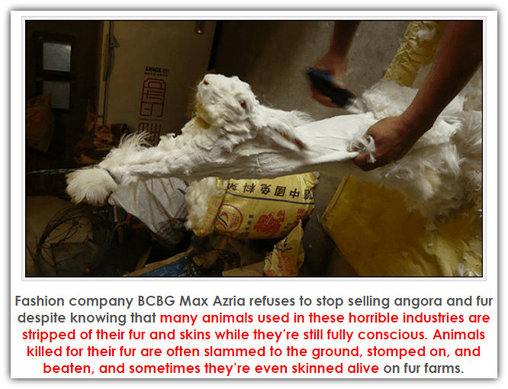
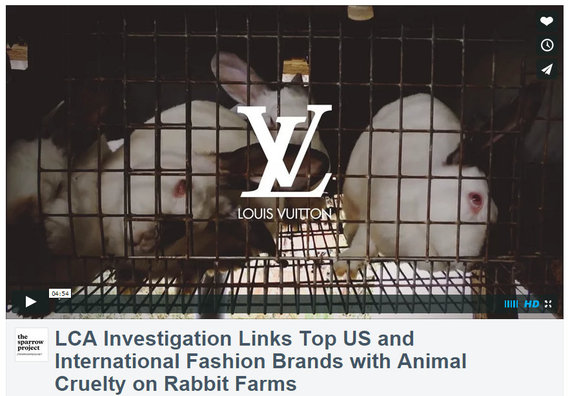
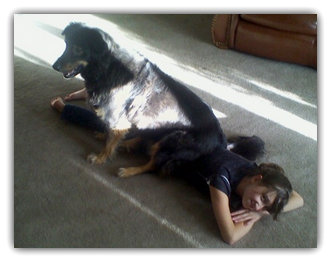

 RSS Feed
RSS Feed
